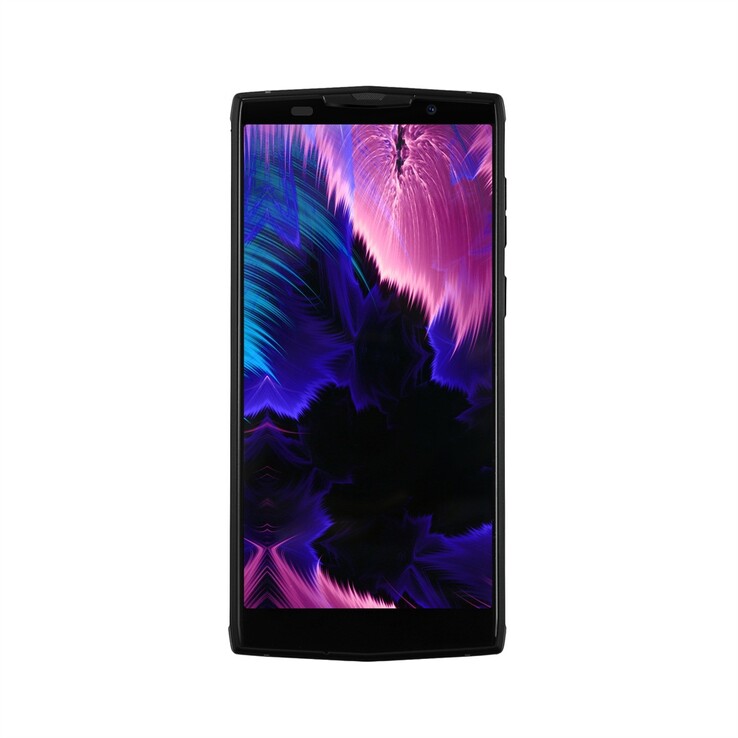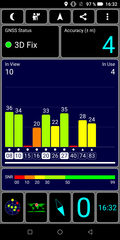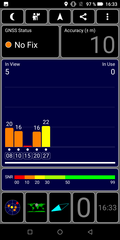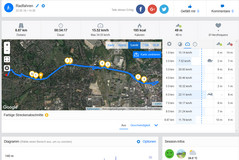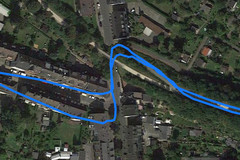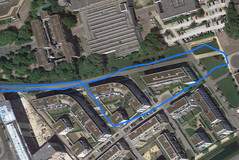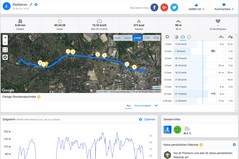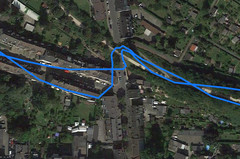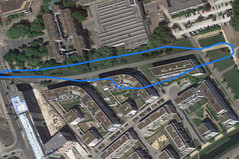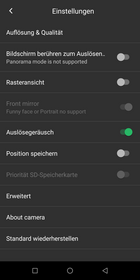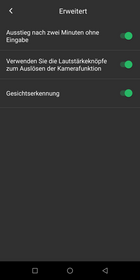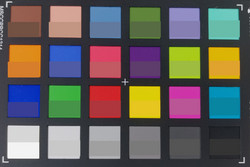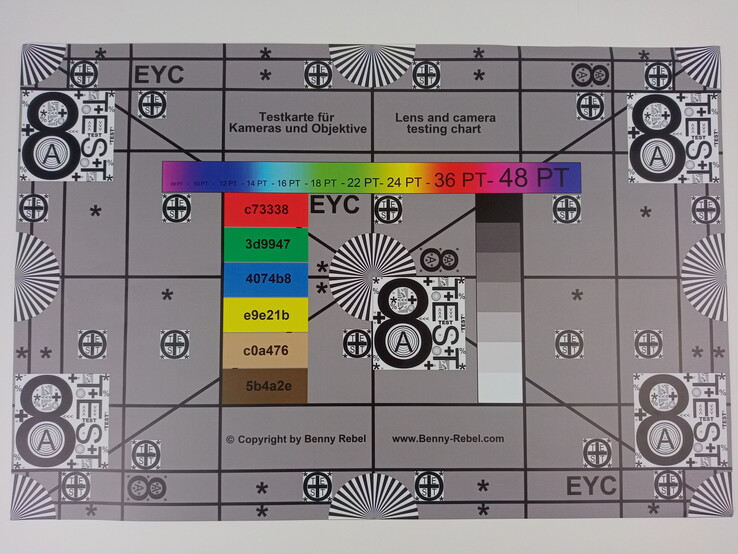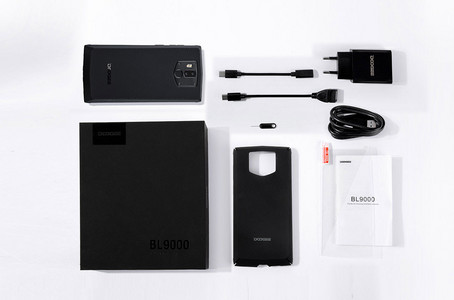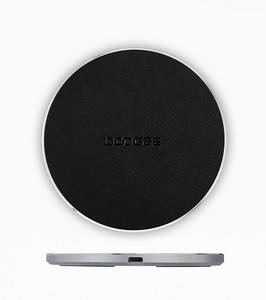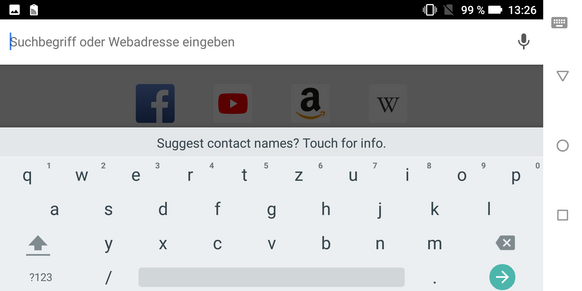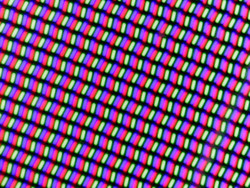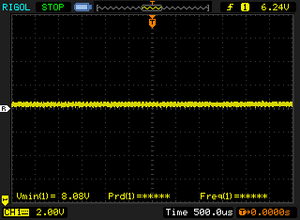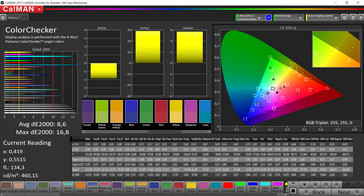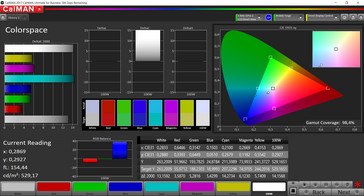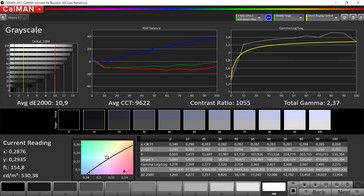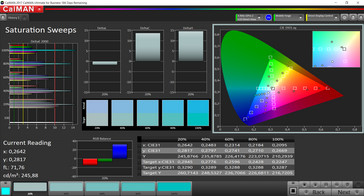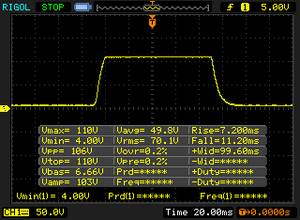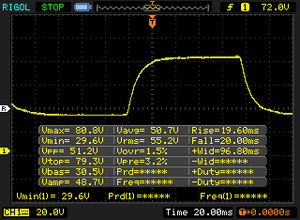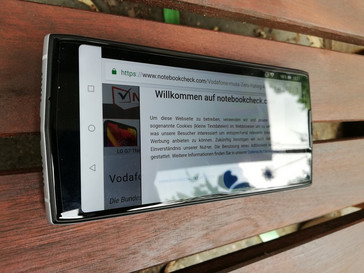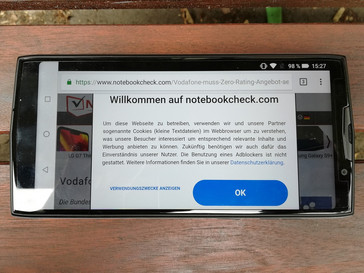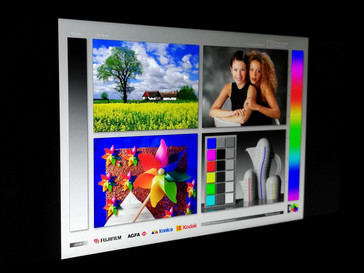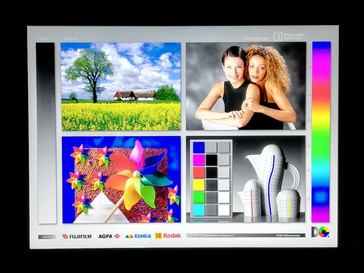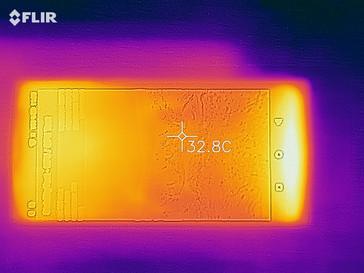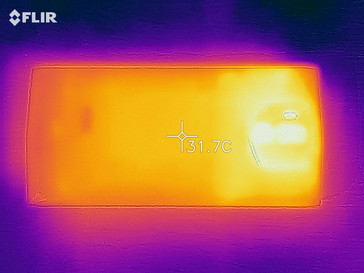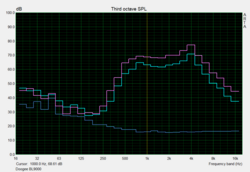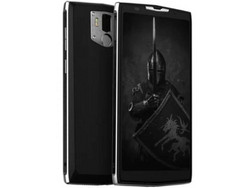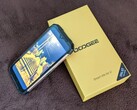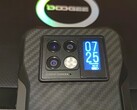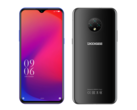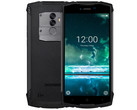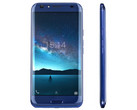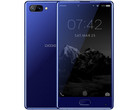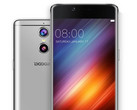Doogee BL9000 Smartphone Review
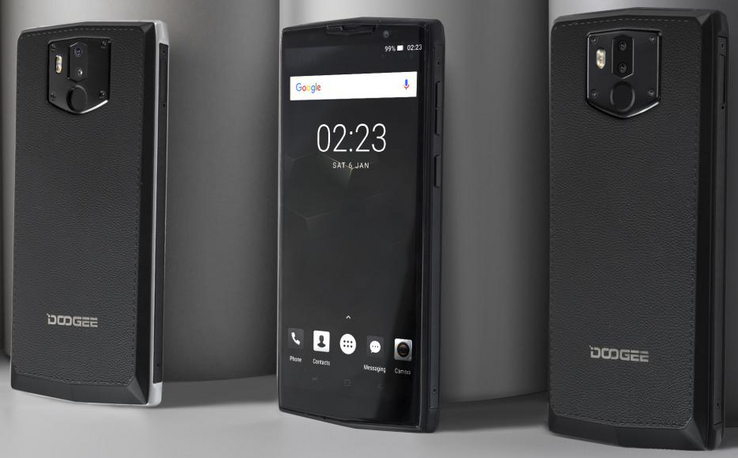
While other smartphone manufacturers try to follow supposed design trends, Doogee simply equips its phones with solid hardware and makes sure they run for a long time. In our previous reviews, however, devices produced by the Chinese manufacturer have been plagued by weaknesses that do not show up on the specification sheet.
Our current test device, the Doogee BL9000, has a good foundation for a solid mid-range smartphone: Mediatek's Helio P23 MT6763T SoC, an ARM Mali G71 MP2 and 6 GB of RAM. Other features include 64 GB of storage space and a dual camera with a 12+5 MP sensor.
Despite its gigantic battery, the BL9000 is not without rivals. Two other Chinese manufacturers are also producing devices with over-sized batteries: Oukitel with its K10 and Ulefone with its Armor X. In addition, the 200-Euro (~$230) price bracket is highly competitive. As a result, cheaper smartphones, such as the BQ Aquaris VS and the Maze Alpha X may be interesting for consumers. We will compare our test device with these products as well.
Case - Chinese smartphone made of plastic
The BL9000's case is big, but not clunky. It sits comfortably in your hand and stands out mostly due to its thick design (constructed to fit its big battery). The case material consists mostly of plastic. It does not have a particularly high-quality feel, but it is well-manufactured. The back is made of black plastic with an artificial leather look. The surrounding frame on our test device is silver, but black is available as well. The buttons, enclosed in a thin border, are located on the right. The microSD/SIM card slot sits on the left.
Connectivity - BL9000 mid-range smartphone with lots of storage
Doogee has equipped its BL9000 with Mediatek's Helio P23 MT6763T and an ARM Mali G71 MP2 graphics unit. Combined with 6 GB of RAM and 64 GB of storage space, the foundation for a high-performance mid-range smartphone is laid. Our test device's card slot fits either two nano SIM cards or a microSD card and a nano SIM card. The only physical connection is a USB 2.0 Type C port. This port supports OTG and can thus be used to charge external devices. Apart from LTE, GPS and NFC, Doogee has also supplied the BL9000 with a wireless charge function.
Software - Doogee with Android Oreo
The Doogee BL9000 runs Android 8.1 and the DoogeeOS version 2.0. With the exception of a few customized symbols and minor changes, by and large the OS is pure Android Oreo. The system runs smoothly and offers everything that users are familiar with from other Android smartphones. It is possible to use an SD card, but it cannot be formatted as internal storage, nor can it be used to store apps.
Communication and GPS - Imprecise GPS in the Doogee BL9000
The BL9000 makes it possible to communicate in many different ways. Alongside the GSM and 3G wireless standards, our test device also supports LTE—including the LTE Band 20, which is widespread in Europe. Users can rely on WLAN, NFC and Bluetooth 4.0 for communication over shorter distances.
The BL9000's WLAN scored below average in our tests. Data was transferred and received at around 100 MBit/s, though the reception was always good.
| Networking | |
| iperf3 transmit AX12 | |
| BQ Aquaris VS | |
| Ulefone Power 3 | |
| Doogee BL9000 | |
| Maze Alpha X | |
| Oukitel K10 | |
| iperf3 receive AX12 | |
| BQ Aquaris VS | |
| Ulefone Power 3 | |
| Doogee BL9000 | |
| Maze Alpha X | |
| Oukitel K10 | |
The Doogee BL9000's built-in GPS enables users to determine their location. With the "GPS Test" app, the smartphone positions itself with an adequate level of precision outdoors. After some time, enough satellites were located for our test device to position us outdoors with an accuracy of around four meters (~13 ft). Indoors the signal was quickly lost, indicating that positioning from within a building is not possible.
We also used our Garmin Edge 500 reference device to determine how well the Chinese smartphone performs in terms of navigation. Our test showed that the Doogee device frequently positions the user a little away from his or her actual path. The divergences are big enough that whole neighborhood blocks are not circumnavigated properly. As a result, the BL9000 is not well-suited for reliable navigation.
Phone Function and Call Quality - Good connection with the BL9000 smartphone
For phone conversations, users of the BL9000 can bring up the standard Android app that offers all the usual functions. In use, the Doogee smartphone's call quality is average. At higher volumes, the voice of the person on the other end buzzes a little. Users can talk on the phone hands-free using the built-in speakerphone. The maximum volume is reasonably loud, but could be insufficient in noisy environments. Our conversation partner's voice buzzed a bit here too.
Cameras - Chinese smartphone with a dual camera
The Chinese manufacturer Doogee has equipped the BL9000 with a 12+5 MP dual camera and a 5 MP front camera. Selfie lovers will get good results from the front camera—even in spaces with no artificial lighting, as long as there is some sunlight. The main camera has an f/2.2 aperture and also takes reasonably good pictures. Landscape photos taken in daylight are a little too dark, but the camera captures details and gradients well. The same goes for close-ups, though the low level of light sensitivity means that these images can also appear dark. Unsurprisingly, this effect shows up in photos captured in low light environments. Without flash, pictures taken under poor lighting conditions are essentially worthless.
The settings menu only contains various camera modes—brightness, white balance and ISO cannot be adjusted. Nor does the video function offer more than rudimentary adjustment options. Videos recorded with the camera are similar in quality to its photos, but they do require a steady hand, given that the camera has little to offer in the way of image stabilization.
We used the ColorChecker Passport program to test the BL9000 camera's color accuracy. The results show that most tones are rendered too light. The Doogee smartphone also has minor problems with the grayscale. Light grays look too light, and dark grays too dark.
In a controlled lighting environment, the Doogee BL9000 was able to take an average-quality snapshot of our test chart. In the middle of the photo, details are sharp; colors, fine lines, and structures are all easily recognizable. Along the edges, the image becomes progressively more blurry and pale.
Accessories and Warranty - Lots of accessories for the Doogee BL9000
Doogee is not stingy when it comes to the range of accessories included in the BL9000's box. The Chinese smartphone comes with a USB power supply with matching cable, USB Type C adapters for connecting a 3.5mm jack or a USB Type A device, a protective cover for the phone, a screen protector, and a SIM ejector tool. As if that were not enough, the package also contains a 10-watt charging pad for the wireless charge function.
Buyers of the BL9000 will receive a 12-month warranty from Doogee. Please see our Guarantees, Return policies and Warranties FAQ for country-specific information.
Input Devices and Operation - Touchscreen and sensors function well
Typing on the BL9000 is quick and simple with Google's GBoard. Every keystroke is accompanied by a slight vibration. The touchscreen reacts promptly and responds well for drag-and-drop, but there is always a faint level of friction between the screen and the user's fingertips. The position sensor is also responsive and turns the display image—in camera mode, for example—almost seamlessly from portrait to landscape.
A fingerprint sensor on the back of the Chinese smartphone unlocks the screen quickly. The sensor reacts even if the registered finger touches the surface a little askew. The face recognition responded just as quickly in our test. The smartphone always recognized us properly, no matter the angle or distance.
Display - Doogee with IPS panel
The Doogee BL9000 is equipped with an IPS panel in 2:1 format with a resolution of 2160 x 1080 pixels. These basic specifications and our average brightness measurement of 513 cd/m² are all within the expected range for a device in this price bracket. Compared to the competition, the display places roughly in the middle and has no unusual characteristics.
| |||||||||||||||||||||||||
Brightness Distribution: 82 %
Center on Battery: 529 cd/m²
Contrast: 1080:1 (Black: 0.49 cd/m²)
ΔE ColorChecker Calman: 8.6 | ∀{0.5-29.43 Ø4.78}
ΔE Greyscale Calman: 10.9 | ∀{0.09-98 Ø5}
98.4% sRGB (Calman 2D)
Gamma: 2.37
CCT: 9622 K
| Doogee BL9000 IPS, 2160x1080, 6" | Oukitel K10 IPS, 2160x1080, 6" | Ulefone Power 3 IPS, 2160x1080, 6" | BQ Aquaris VS IPS, 1280x720, 5.2" | Maze Alpha X IPS, 2160x1080, 6" | |
|---|---|---|---|---|---|
| Screen | -3% | 27% | 13% | -18% | |
| Brightness middle (cd/m²) | 529 | 561 6% | 494 -7% | 535 1% | 497 -6% |
| Brightness (cd/m²) | 513 | 541 5% | 485 -5% | 544 6% | 478 -7% |
| Brightness Distribution (%) | 82 | 92 12% | 87 6% | 88 7% | 87 6% |
| Black Level * (cd/m²) | 0.49 | 0.58 -18% | 0.33 33% | 0.61 -24% | 0.6 -22% |
| Contrast (:1) | 1080 | 967 -10% | 1497 39% | 877 -19% | 828 -23% |
| Colorchecker dE 2000 * | 8.6 | 10 -16% | 5.1 41% | 5.3 38% | 11.6 -35% |
| Colorchecker dE 2000 max. * | 16.8 | 16.7 1% | 9.9 41% | 11.1 34% | 22.1 -32% |
| Greyscale dE 2000 * | 10.9 | 11.1 -2% | 3.5 68% | 4 63% | 13.5 -24% |
| Gamma | 2.37 93% | 1.8 122% | 2.16 102% | 1.95 113% | 2.93 75% |
| CCT | 9622 68% | 9689 67% | 7253 90% | 6800 96% | 9955 65% |
* ... smaller is better
Screen Flickering / PWM (Pulse-Width Modulation)
| Screen flickering / PWM not detected | |||
In comparison: 53 % of all tested devices do not use PWM to dim the display. If PWM was detected, an average of 8108 (minimum: 5 - maximum: 343500) Hz was measured. | |||
Our test device's contrast ratio proves to be slightly above average, which is evident from the display's clearly distinguishable colors. It would be an exaggeration to refer to the black value as "good", but it does surpass most of the other devices here. Black tones look somewhat richer, but still appear to be clouded by a faint gray haze. In addition, the more realistic APL50 black value is significantly higher; at 0.62, it lies even further from a deep black. While the screen displays red and green tones in a fairly balanced manner, blues are substantially over-represented.
Display Response Times
| ↔ Response Time Black to White | ||
|---|---|---|
| 18.4 ms ... rise ↗ and fall ↘ combined | ↗ 7.2 ms rise | |
| ↘ 11.2 ms fall | ||
| The screen shows good response rates in our tests, but may be too slow for competitive gamers. In comparison, all tested devices range from 0.1 (minimum) to 240 (maximum) ms. » 40 % of all devices are better. This means that the measured response time is similar to the average of all tested devices (20.2 ms). | ||
| ↔ Response Time 50% Grey to 80% Grey | ||
| 39.6 ms ... rise ↗ and fall ↘ combined | ↗ 19.6 ms rise | |
| ↘ 20 ms fall | ||
| The screen shows slow response rates in our tests and will be unsatisfactory for gamers. In comparison, all tested devices range from 0.165 (minimum) to 636 (maximum) ms. » 59 % of all devices are better. This means that the measured response time is worse than the average of all tested devices (31.6 ms). | ||
Performance - Mid-range smartphone from China
In the Doogee BL9000, a Mediatek Helio P23 SoC and an ARM Mali G71 MP2 GPU provide the necessary performance power to run the Android 8.1 system. 6 GB of RAM and 64 GB of flash storage also stand at the ready. This configuration marks the BL9000 as a simple mid-range device. Many smartphones from the price bracket between 200 and 300 Euros (~$230 - ~$345) offer similar hardware components.
The BL9000 produced mixed results in our benchmarks. In tests that target work performance, the Doogee smartphone achieved good results; but in web and graphics-based benchmarks, it frequently came in closer to the bottom. In daily use, the system runs smoothly and only requires a little additional time to load media content.
| AnTuTu v6 - Total Score (sort by value) | |
| Doogee BL9000 | |
| Oukitel K10 | |
| Ulefone Power 3 | |
| BQ Aquaris VS | |
| Maze Alpha X | |
| Average Mediatek Helio P23 MT6763T (54201 - 73836, n=8) | |
| AnTuTu v7 - Total Score (sort by value) | |
| Doogee BL9000 | |
| Oukitel K10 | |
| Ulefone Power 3 | |
| BQ Aquaris VS | |
| Maze Alpha X | |
| Average Mediatek Helio P23 MT6763T (54192 - 95559, n=8) | |
| PCMark for Android | |
| Work performance score (sort by value) | |
| Doogee BL9000 | |
| Oukitel K10 | |
| Ulefone Power 3 | |
| BQ Aquaris VS | |
| Maze Alpha X | |
| Average Mediatek Helio P23 MT6763T (5909 - 6846, n=8) | |
| Work 2.0 performance score (sort by value) | |
| Doogee BL9000 | |
| Oukitel K10 | |
| Ulefone Power 3 | |
| BQ Aquaris VS | |
| Maze Alpha X | |
| Average Mediatek Helio P23 MT6763T (4622 - 5054, n=7) | |
| GFXBench 3.0 | |
| on screen Manhattan Onscreen OGL (sort by value) | |
| Doogee BL9000 | |
| Oukitel K10 | |
| Ulefone Power 3 | |
| BQ Aquaris VS | |
| Maze Alpha X | |
| Average Mediatek Helio P23 MT6763T (10 - 22, n=7) | |
| Average of class Smartphone (18 - 166, n=157, last 2 years) | |
| 1920x1080 1080p Manhattan Offscreen (sort by value) | |
| Doogee BL9000 | |
| Oukitel K10 | |
| Ulefone Power 3 | |
| BQ Aquaris VS | |
| Maze Alpha X | |
| Average Mediatek Helio P23 MT6763T (10 - 11, n=7) | |
| Average of class Smartphone (12 - 606, n=156, last 2 years) | |
| GFXBench 3.1 | |
| on screen Manhattan ES 3.1 Onscreen (sort by value) | |
| Doogee BL9000 | |
| Oukitel K10 | |
| Ulefone Power 3 | |
| BQ Aquaris VS | |
| Maze Alpha X | |
| Average Mediatek Helio P23 MT6763T (6.2 - 16, n=7) | |
| Average of class Smartphone (11 - 166, n=157, last 2 years) | |
| 1920x1080 Manhattan ES 3.1 Offscreen (sort by value) | |
| Doogee BL9000 | |
| Oukitel K10 | |
| Ulefone Power 3 | |
| BQ Aquaris VS | |
| Maze Alpha X | |
| Average Mediatek Helio P23 MT6763T (6.5 - 7.2, n=7) | |
| Average of class Smartphone (8.4 - 413, n=156, last 2 years) | |
| Lightmark - 1920x1080 1080p (sort by value) | |
| Oukitel K10 | |
| Ulefone Power 3 | |
| Average Mediatek Helio P23 MT6763T (4.99 - 5.25, n=2) | |
| Basemark ES 3.1 / Metal - offscreen Overall Score (sort by value) | |
| Oukitel K10 | |
| Ulefone Power 3 | |
| Average Mediatek Helio P23 MT6763T (242 - 242, n=2) | |
| Average of class Smartphone (205 - 7731, n=35, last 2 years) | |
In the browser benchmarks, the BL9000's results were average. Surfing is no problem, as long as websites are not too elaborate. If media content and videos appear in large numbers, the smartphone needs a little more time to load.
| JetStream 1.1 - Total Score | |
| Maze Alpha X (Chrome Version 64) | |
| Ulefone Power 3 (Standardbrowser 7.1.1) | |
| Average Mediatek Helio P23 MT6763T (17.9 - 25.9, n=7) | |
| Doogee BL9000 (Chrome 67) | |
| Oukitel K10 (Standard Browser 7.1.1) | |
| BQ Aquaris VS (Chrome 65) | |
| Octane V2 - Total Score | |
| Average of class Smartphone (2228 - 121337, n=197, last 2 years) | |
| Maze Alpha X (Chrome Version 64) | |
| Doogee BL9000 (Chrome 67) | |
| Average Mediatek Helio P23 MT6763T (3051 - 4987, n=8) | |
| BQ Aquaris VS (Chrome 65) | |
| Ulefone Power 3 (Standardbrowser 7.1.1) | |
| Oukitel K10 (Standard Browser 7.1.1) | |
| Mozilla Kraken 1.1 - Total | |
| Ulefone Power 3 (Standardbrowser 7.1.1) | |
| Oukitel K10 (Standard Browser 7.1.1) | |
| Average Mediatek Helio P23 MT6763T (11352 - 23714, n=8) | |
| BQ Aquaris VS (Chrome 65) | |
| Doogee BL9000 (Chrome 67) | |
| Maze Alpha X (Chrome Version 64) | |
| Average of class Smartphone (257 - 28190, n=154, last 2 years) | |
| WebXPRT 2015 - Overall | |
| Oukitel K10 (Standard Browser 7.1.1) | |
| Average Mediatek Helio P23 MT6763T (43 - 46, n=2) | |
| Ulefone Power 3 (Standardbrowser 7.1.1) | |
* ... smaller is better
With its 64 GB of flash storage, the Doogee BL9000 is on par with the rest of the competition on our list. The write and read speeds only differ slightly between the various devices. Here, too, our test device falls more or less in the middle. The same goes for the built-in microSD card reader. With our Toshiba Exceria Pro M501 reference memory card, the card reader performs slightly above average, but not by enough to stand out from the competition.
| Doogee BL9000 | Oukitel K10 | Ulefone Power 3 | BQ Aquaris VS | Maze Alpha X | Average 64 GB eMMC Flash | Average of class Smartphone | |
|---|---|---|---|---|---|---|---|
| AndroBench 3-5 | 14% | 15% | -16% | -1% | 23% | 1104% | |
| Sequential Read 256KB (MB/s) | 289 | 291.5 1% | 294.6 2% | 254.4 -12% | 247.4 -14% | 277 ? -4% | 2228 ? 671% |
| Sequential Write 256KB (MB/s) | 210.7 | 213.3 1% | 214.9 2% | 185.9 -12% | 162.2 -23% | 178.4 ? -15% | 1852 ? 779% |
| Random Read 4KB (MB/s) | 49.78 | 52.2 5% | 61.4 23% | 47.2 -5% | 70.3 41% | 60.7 ? 22% | 296 ? 495% |
| Random Write 4KB (MB/s) | 13.19 | 22.88 73% | 21.25 61% | 6.4 -51% | 11.61 -12% | 33.8 ? 156% | 339 ? 2470% |
| Sequential Read 256KB SDCard (MB/s) | 80.3 ? | 82.2 ? 2% | 81.8 ? 2% | 83.3 ? 4% | 81 ? 1% | 77.4 ? -4% | |
| Sequential Write 256KB SDCard (MB/s) | 73 ? | 74.7 ? 2% | 71.9 ? -2% | 59.4 ? -19% | 74 ? 1% | 58.3 ? -20% |
Games - Simple games on a simple cellphone
ARM's Mali G71 MP2 serves as the Doogee BL9000's GPU. This is an entry-level graphics card for simple applications. Casual games run fluidly, but users will need to select lower graphics settings for more demanding games to play smoothly. For example, in our test, “Dead Trigger 2” stuttered at medium settings as soon as our character went outdoors. Both the touchscreen and the position sensor worked flawlessly during our tests.
Emissions - BL9000 remains cool
The BL9000's surface temperatures always remain moderate. We measured a maximum of 35°C (95°F) in our test—meaning that the device only occasionally feels warm. While almost no apps are able to drive the temperature upward, the Chinese smartphone does warm up when charging.
(+) The maximum temperature on the upper side is 34.4 °C / 94 F, compared to the average of 35.2 °C / 95 F, ranging from 21.9 to 247 °C for the class Smartphone.
(+) The bottom heats up to a maximum of 29.6 °C / 85 F, compared to the average of 34 °C / 93 F
(+) In idle usage, the average temperature for the upper side is 29.1 °C / 84 F, compared to the device average of 32.9 °C / 91 F.
Speaker
Our test device's speaker can reproduce media content at a reasonably loud volume. However, some tones buzz a little when the volume is set too high. At lower volume settings, the sound is comparatively balanced—only very high tones and deep bass are absent. External speakers or headphones are the better choice for regular use.
The BL9000's packaging includes a USB Type C to 3.5 mm jack adapter. This piece of equipment makes it easy to connect speakers or headphones with the Chinese smartphone. The jack is constructed almost entirely of plastic, and plugs need to be pushed in tightly to connect properly.
Doogee BL9000 audio analysis
(+) | speakers can play relatively loud (82.5 dB)
Bass 100 - 315 Hz
(-) | nearly no bass - on average 31.3% lower than median
(±) | linearity of bass is average (9.5% delta to prev. frequency)
Mids 400 - 2000 Hz
(+) | balanced mids - only 4.3% away from median
(±) | linearity of mids is average (7.1% delta to prev. frequency)
Highs 2 - 16 kHz
(±) | higher highs - on average 7.1% higher than median
(±) | linearity of highs is average (9% delta to prev. frequency)
Overall 100 - 16.000 Hz
(±) | linearity of overall sound is average (28.4% difference to median)
Compared to same class
» 74% of all tested devices in this class were better, 5% similar, 22% worse
» The best had a delta of 11%, average was 35%, worst was 134%
Compared to all devices tested
» 85% of all tested devices were better, 3% similar, 12% worse
» The best had a delta of 4%, average was 24%, worst was 134%
Oukitel K10 audio analysis
(+) | speakers can play relatively loud (87.6 dB)
Bass 100 - 315 Hz
(-) | nearly no bass - on average 34.9% lower than median
(±) | linearity of bass is average (7.7% delta to prev. frequency)
Mids 400 - 2000 Hz
(±) | reduced mids - on average 5.3% lower than median
(+) | mids are linear (6.4% delta to prev. frequency)
Highs 2 - 16 kHz
(±) | higher highs - on average 6.1% higher than median
(+) | highs are linear (6.4% delta to prev. frequency)
Overall 100 - 16.000 Hz
(±) | linearity of overall sound is average (25.3% difference to median)
Compared to same class
» 62% of all tested devices in this class were better, 7% similar, 31% worse
» The best had a delta of 11%, average was 35%, worst was 134%
Compared to all devices tested
» 77% of all tested devices were better, 5% similar, 18% worse
» The best had a delta of 4%, average was 24%, worst was 134%
Battery Life - Chinese smartphone with a big battery
The Doogee BL9000 is the most energy-saving smartphone on our list of competing devices. At a maximum power draw of 4 watts, it is substantially more frugal with its energy usage than the overall average among comparable devices. The 25-watt charging device that comes with the smartphone is equipped with Mediatek's PumpExpress technology, which is designed to significantly shorten charge times.
| Off / Standby | |
| Idle | |
| Load |
|
Key:
min: | |
| Doogee BL9000 9000 mAh | Oukitel K10 11000 mAh | Ulefone Power 3 6080 mAh | BQ Aquaris VS 3100 mAh | Maze Alpha X 3900 mAh | Average Mediatek Helio P23 MT6763T | Average of class Smartphone | |
|---|---|---|---|---|---|---|---|
| Power Consumption | -31% | -5% | -7% | -35% | -32% | -68% | |
| Idle Minimum * (Watt) | 0.68 | 0.89 -31% | 0.79 -16% | 0.61 10% | 0.9 -32% | 0.873 ? -28% | 0.842 ? -24% |
| Idle Average * (Watt) | 1.65 | 2.48 -50% | 1.82 -10% | 1.7 -3% | 2.14 -30% | 2.08 ? -26% | 1.439 ? 13% |
| Idle Maximum * (Watt) | 1.71 | 2.52 -47% | 1.87 -9% | 1.71 -0% | 2.18 -27% | 2.18 ? -27% | 1.624 ? 5% |
| Load Average * (Watt) | 2.78 | 3.13 -13% | 2.7 3% | 3.02 -9% | 3.96 -42% | 3.88 ? -40% | 7.03 ? -153% |
| Load Maximum * (Watt) | 3.99 | 4.5 -13% | 3.62 9% | 5.31 -33% | 5.81 -46% | 5.58 ? -40% | 11.3 ? -183% |
* ... smaller is better
Battery Life
In terms of battery life, the Doogee BL9000 is far superior to the competition. In our WLAN test, which is designed to simulate everyday use, the smartphone ran for over 38 hours with the display on and set to a brightness level of 150 cd/m². Afterward, the power supply fully charged the battery in around 3 hours. Those who have more time can use the charging pad with the smartphone's wireless charge function. Charging takes considerably longer with the charging pad, but it works perfectly.
| Doogee BL9000 9000 mAh | Oukitel K10 11000 mAh | Ulefone Power 3 6080 mAh | BQ Aquaris VS 3100 mAh | Maze Alpha X 3900 mAh | |
|---|---|---|---|---|---|
| Battery runtime | |||||
| WiFi v1.3 (h) | 38.1 | 27.2 -29% | 22.9 -40% | 11.4 -70% | 10.1 -73% |
Pros
Cons
Verdict - Ordinary performance with longer battery life
The Doogee BL9000 proves to be an extremely long-lasting mid-range smartphone. Everyday applications and surfing the internet pose no problem for the Chinese smartphone. When it comes to more demanding apps or media content, prospective buyers should be prepared for longer load times.
The Doogee BL9000 offers tremendous battery life and a modern operating system. Those who are content to do without a modern design and do not require much in the way of system performance are likely to be pleased with this device.
As long as performance is not a concern, anyone looking for a smartphone with as much battery life as possible ought to take a closer look at the BL9000. Other reasons to purchase this device include its modern Android 8.1 system with 64 GB of internal storage, and the option to install two SIM cards. Design cannot be a primary concern, however.
Doogee BL9000
- 06/19/2018 v6 (old)
Mike Wobker




